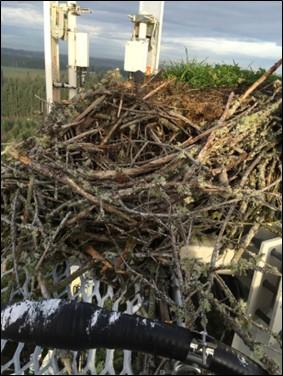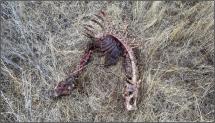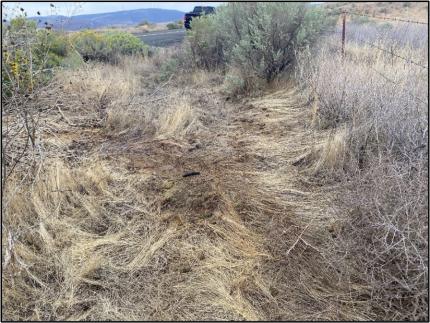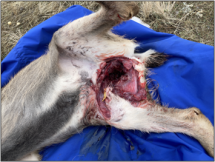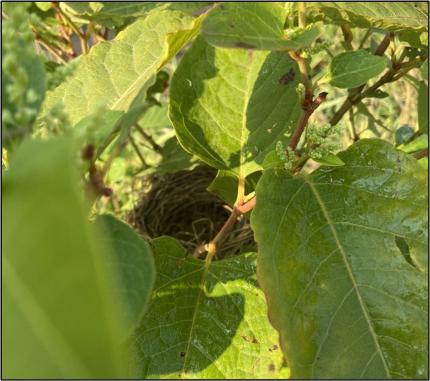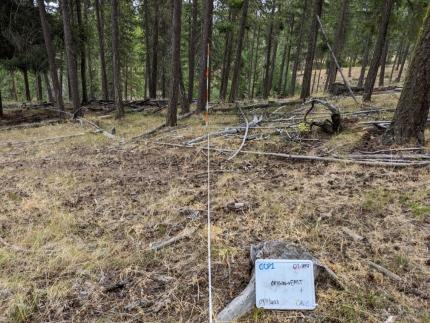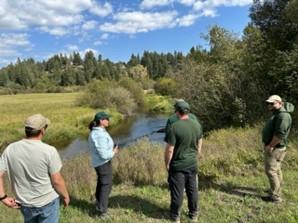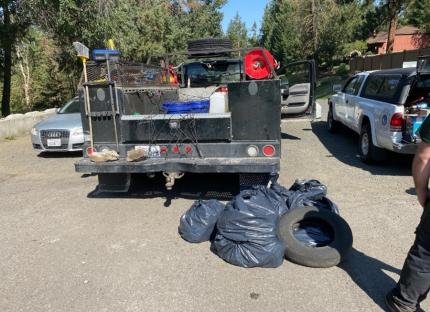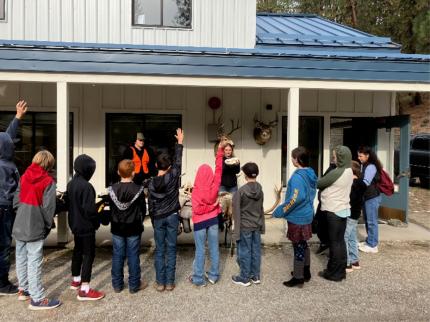Biweekly report Sept16-30 2024 - Region 5 (Southwest)
Managing Wildlife Populations
Cave Scouting: Biologists Wickhem, Ott, Bergh, Holman, and Stephens, with the help of Volunteers Petrie and Roe, spent several days in September finding and marking cave entrances in Skamania and Klickitat counties. Many of these caves have not been surveyed in 20 to 30 years and the GPS locations are not entirely accurate. Also, it can be very difficult to locate cave entrances when the access points are found in large rocky sinks and/or the entrances are small. During scouting efforts, the GPS points were verified or corrected, photos were taken of the entrances, and entrances were flagged when necessary. The caves will be revisited this winter, when the entrances can be even harder to locate under several feet of snow.
The goal of the winter surveys is to document the number and species of hibernating bats in each cave. Townsend’s big-eared bats (Corynorhinus townsendii), one target of the surveys, are a Washington Species of Greatest Conservation Need (SCGN) and are a “subterranean-obligate species” meaning they rely on caves or mines to roost and hibernate. The surveys will also search for hibernating Myotis species and swab them for Pd (Pseudogymnoascus destructans), the fungus that causes white-nose syndrome in bats.
Pika Scat Collection: Biologists Wickhem and Ott spent several hours scouring the mossy talus at a known pika site in Skamania County this month. The goal was to find and collect pika scat that will be sent to two different researchers; one in Michigan who will analyze the poo for genetic markers, and another in Colorado who will test the pellets for cortisol to assess stress levels of pikas living in these unique habitats. Other researchers and volunteer members are collecting scat throughout the Columbia River Gorge this fall. Pikas in the Gorge are the only known American pika (Ochotona princeps) population to live near sea level – most pikas in North America inhabit high alpine habitats where they can escape the summer heat. Gorge pikas can stay cool in the summer and fed in the winter thanks to the thick carpets of moss that often cover the talus slopes in these areas. Since the moss is available year-round, they also do not need to collect “haypiles” (piles of harvested vegetation to feed on during the winter months), which can save them a tremendous amount of energy.
Providing Recreation Opportunities
Graffiti Abatement: Access area staff members took advantage of the warmer weather to paint over graffiti on the exterior walls of several restrooms. When painting large areas like this, unfortunately for access staff members, it requires a continual presence on site to ensure that the paint is dry before leaving. With any luck, the walls will stay graffiti free for a while.





































